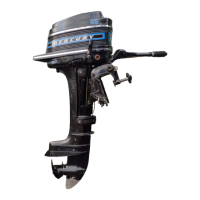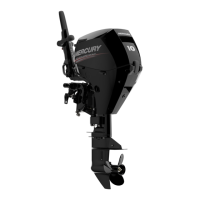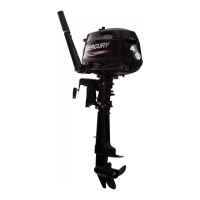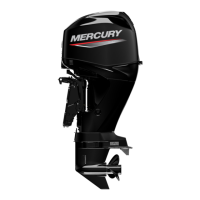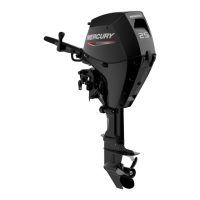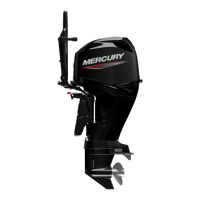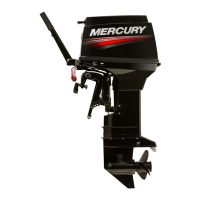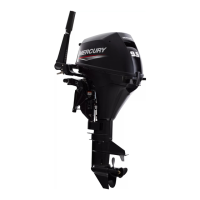GENERAL INFORMATION
Page 1C-10 90-828631R3 MARCH 1999
WARNING
Avoid possible serious injury or death. When the outboard is trimmed in or out be-
yond a neutral steering condition, a pull on the steering wheel or tiller handle in ei-
ther direction may result. Failure to keep a continuous firm grip on the steering
wheel or tiller handle when this condition exists can result in loss of boat control
as the outboard can turn freely. The boat can now “spin out” or go into a very tight
maximum turn which, if unexpected, can result in occupants being thrown within
the boat or out of the boat.
Consider the following lists carefully:
TRIMMING IN OR DOWN CAN:
1. Lower the bow.
2. Result in quicker planing off, especially with a heavy load or a stern heavy boat.
3. Generally improve the ride in choppy water.
4. Increase steering torque or pull to the right (with the normal right hand rotation
propeller).
5. In excess, lower the bow of some boats to a point where they begin to plow with their
bow in the water while on plane. This can result in an unexpected turn in either direction
called “bow steering” or “over steering” if any turn is attempted or if a significant wave
is encountered.
WARNING
Avoid possible serious injury or death. Adjust outboard to an intermediate trim po-
sition as soon as boat is on plane to avoid possible ejection due to boat spin-out.
Do not attempt to turn boat when on plane if outboard is trimmed extremely in or
down and there is a pull on the steering wheel or tiller handle.
TRIMMING OUT OR UP CAN:
1. Lift the bow higher out of the water.
2. Generally increase top speed.
3. Increase clearance over submerged objects or a shallow bottom.
4. Increase steering torque or pull to the left at a normal installation height (with the normal
right hand rotation propeller).
5. In excess, cause boat “porpoising” (bouncing) or propeller ventilation.
6. Cause engine overheating if any water intake holes are above the water line.
Trim “In” Angle Adjustment
Some outboard boats, particularly some bass boats, are built with a greater than normal
transom angle which will allow the outboard to be trimmed further “in” or “under”. This great-
er trim “under” capability is desirable to improve acceleration, reduce the angle and time
spent in a bow high boat, altitude during planing off, and in some cases, may be necessary
to plane off a boat with aft live wells, given the variety of available propellers and height
range of engine installations.
However, once on plane, the engine should be trimmed to a more intermediate position to
a avoid a bow-down planing condition called “plowing”. Plowing can cause “bow steering”
or “over steering” and inefficiently consumes horsepower. In this condition, if attempting a
turn or encountering a diagonal, moderate wake, a more abrupt turn than intended may
result.
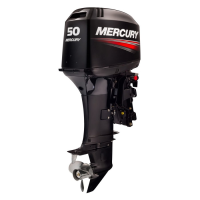
